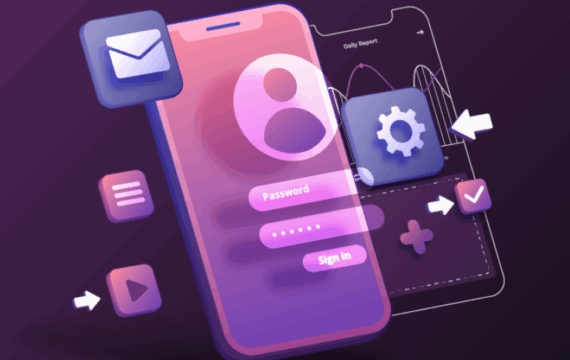Manual credit scoring is fast becoming a thing of the past. By combining traditional and alternative data sources with proprietary machine learning technology, Kreditech underwrites loans to millions of customers all around the globe. At IT Arena, we had a chance to talk with Luis Moreira-Matias, Head of Data Science at Kreditech, about the role of AI in the banking industry and the unique vision of Kreditech.
What are the current advances in data science and the main challenges in the banking domain?
Today’s banking businesses still rely on manual labor a lot in order to underwrite loan applications. This approach limits their client base to so-called “prime customers” with a steady income, impeccable pay slip and no debt. Meanwhile, a very large segment of potential lenders is excluded. On the contrary, the combination of big data analytics service and machine learning technology will allow banks to enlarge their customer segment, reduce costs, automate many processes and overcome business barriers.
What exactly does AI integration mean for banking? Why would banks want to pursue it?
AI in banking is a tricky question. The thing is that artificial intelligence still leaves much to be desired. Far from being human-level, modern algorithms are designed to solve very specific tasks, such as to distinguish a person from a motorcycle or a cat from a dog. It’s the main reason why AI is not so popular in the banking industry. But for sure, there are a few areas where I see it has made an immediate impact. It is helpful in credit loan underwriting and tax processing — for digitalization of documents and extracting information out of them, which is typically called natural language processing. And not to forget about the automation of call centers.
What types of AI applications are currently in use by customers and employees of Kreditech?
We use a large spectrum of artificial intelligence and proprietary machine learning applications throughout our business cycle. For instance, we use AI in credit underwriting, as you might guess. Our call centers, in turn, apply artificial intelligence to calculate customer wait times accurately. With the help of these innovative technologies, we can identify specific, non-traditional prospects and thus personalize our marketing in order to attract this customer segment.
How can banks use big data analytics and data science to improve customer loyalty?
Customer loyalty is also an extremely interesting question. Typically, banks offer a very wide range of services, from traditional debit/credit cards to loans and refunds. Thus, when we talk about customer loyalty, it is very related to customer profitability and customer lifetime value. We have to understand what type of offer attracts our customers. Notably, this offer doesn’t necessarily have to be profitable to a bank.
For example, if you offer a savings account to a university student who has no steady income, you won’t gain much profit. But 10 years later, this very student will secure a mortgage for a house — and that’s where the real profit will come from. Same with credit cards. Though we offer credit cards “for free,” sooner or later, you’ll use it to make a purchase in multiple installments with a very large interest rate.
That said, personalization or the ability to make the right offer at the right time — either to grab a customer or to make a profit out of them — is a key factor for banks to increase customer lifetime value. Such personalization is impossible without big data analytics and data science.
At Kreditech, we do not decide whether to issue a loan or not. We try to personalize the offer and thus to increase the lifetime value of each prospect. For example, when working with “unprofitable” clients, this approach allows us to mitigate our risk and at the same time offer something that a customer will be able to repay.
Why has machine learning become popular only recently when most of the theory and algorithms have existed for so long?
Machine learning has been there for 50 years. Ironically, even the most popular algorithms that are breaking out these days have at least 20 years of history. However, there are two reasons why machine learning has become popular only recently: the amount of digital data available and affordable computational power.
As for the digital data, I’ll give you an example to illustrate how this is happening. Certainly, you’ve seen American movies from 20 to 30 years ago where people were reading huge newspapers while riding the NYC subway. If you see a modern movie, they will do the same, but with their smartphones. The trick is that while navigating their newspapers, these people are generating a lot of digital data, which is also called a digital fingerprint. Technologies that exist today collect this data almost effortlessly.
In terms of computational power, cloud computing is changing the game. Today, you don’t need to be a big organization to afford computational power that allows you to collect and process large volumes of data. That’s why almost every business uses artificial intelligence.
Deep learning is the same as AI. Truth or hype?
It’s definitely hype, because we’ve made the majority of the latest technological breakthroughs due to DL [deep learning] algorithms. We see significant progress in many DL areas, such as computer vision and natural language processing, which is important for information retrieval, for example. However, there are at least two counterarguments against using deep learning everywhere: first, DL technology is overestimated; second, many industries do not need it. For example, while deep learning is vital for the automotive industry, efficient stock market forecasting or credit risk scoring does not require it. Perhaps more than half of all companies that take advantage of machine learning algorithms are using deep learning ones.
Despite the technological advances of the last decade, the modern banking industry still uses inefficient credit scoring methods that exclude many potential customers. Kreditech shows that integrating AI and big data into traditional processes allows you to build a more accurate credit scoring process and increase the lifetime value of each borrower while underwriting loans to underserved customer segments without any financial risks. And it’s only the dawn of the AI era — great breakthroughs are yet to come.


